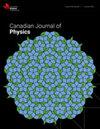Infographic applications in cooperative groups in physics teaching
IF 1
4区 物理与天体物理
Q3 PHYSICS, MULTIDISCIPLINARY
引用次数: 1
Abstract
Contrary to the results of some studies, is online education expected to be as effective as face-to-face education? If this question is answered in the affirmative, how can a design be made for Physics education? This research aims to determine the effectiveness of infographic-assisted physics teaching with collaborative groups in teaching physics subjects online, face-to-face, and coeducational settings. In this research, action research method was used and both qualitative and quantitative findings were analyzed. The sample of the study consists of 168 students studying in one of the high schools in Turkey, where one of the researchers teaches physics. Four different data collection tools were used in the study. These tools are: a five-point Likert-type questionnaire, one consisting of 17 questions and the other 20 questions, an interview form consisting of 4 questions, and rubrics consisting of 6 items. Quantitative findings were evaluated with SPSS and qualitative findings were evaluated with the help of content analysis. According to the results obtained from the research findings, infographic applications in collaborative groups offered in different learning environments such as online, face-to-face, and hybrid learning contribute positively to the development of students’ self-efficacy and social skills for learning physics lessons. Applications carried out with infographic-supported collaborative groups (ISCGs); these applications contributed to the development of physics learning, attitude toward physics lessons, and social skills of students studying in online, face-to-face, and hybrid learning environments. It has been determined that these practices contribute positively to the elimination of academic and social differences among students. On the other hand, when ISCG applications in Physics education are carried out together with online education, which is perceived as disadvantageous, it increases the group responsibilities of the students and enables them to have equal opportunities with the environments where face-to-face education is provided. The technological content of ISCG applications affects the attitudes of high school students positively and ensures their active participation in the activities throughout the process.信息图在物理小组合作教学中的应用
与一些研究的结果相反,在线教育是否与面对面教育一样有效?如果这个问题的答案是肯定的,那么如何设计物理教育呢?本研究旨在探讨资讯图表辅助物理教学在网络、面对面和男女同校环境下的有效性。本研究采用行动研究方法,对定性和定量研究结果进行分析。这项研究的样本包括168名在土耳其一所高中学习的学生,其中一名研究人员在那里教物理。研究中使用了四种不同的数据收集工具。这些工具是:李克特式五点问卷,其中一个由17个问题和其他20个问题组成,一个由4个问题组成的访谈表格,以及由6个项目组成的标题。定量结果用SPSS进行评估,定性结果用内容分析进行评估。研究结果表明,在不同的学习环境下,如在线学习、面对面学习和混合学习,在协作小组中提供信息图表应用,对学生学习物理课程的自我效能感和社交技能的发展有积极的促进作用。与信息图表支持的协作小组(iscg)一起进行的应用;这些应用有助于在在线、面对面和混合学习环境中学习的学生的物理学习、对物理课程的态度和社交技能的发展。已经确定,这些做法有助于消除学生之间的学术和社会差异。另一方面,将ISCG在物理教育中的应用与网络教育相结合,增加了学生的群体责任,使他们能够与面对面教育的环境有平等的机会,而网络教育被认为是不利的。ISCG应用的技术含量对高中生的态度产生了积极的影响,保证了他们在整个过程中积极参与到活动中来。
本文章由计算机程序翻译,如有差异,请以英文原文为准。
求助全文
约1分钟内获得全文
求助全文
来源期刊

Canadian Journal of Physics
物理-物理:综合
CiteScore
2.30
自引率
8.30%
发文量
65
审稿时长
1.7 months
期刊介绍:
The Canadian Journal of Physics publishes research articles, rapid communications, and review articles that report significant advances in research in physics, including atomic and molecular physics; condensed matter; elementary particles and fields; nuclear physics; gases, fluid dynamics, and plasmas; electromagnetism and optics; mathematical physics; interdisciplinary, classical, and applied physics; relativity and cosmology; physics education research; statistical mechanics and thermodynamics; quantum physics and quantum computing; gravitation and string theory; biophysics; aeronomy and space physics; and astrophysics.
 求助内容:
求助内容: 应助结果提醒方式:
应助结果提醒方式:


